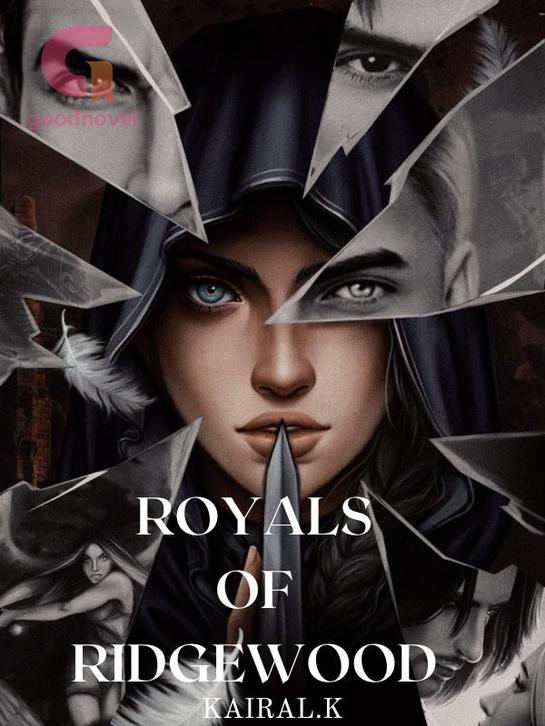
Main Characters
King Alexander Ridgewood: The protagonist of “Royals of Ridgewood,” King Alexander Ridgewood is the reigning monarch of the Ridgewood Kingdom. Alexander’s strategic acumen and charismatic leadership drive his desire to protect his realm and maintain peace. His character blends regal authority and personal vulnerability, reflecting the pressures and responsibilities of kingship. Throughout the story, Alexander grapples with internal and external challenges that test his resolve and leadership.
Queen Isabella Ridgewood: Queen Isabella, Alexander’s wife, plays a central role in the narrative. Her motivations are driven by love for her husband and a commitment to the well-being of the kingdom. As a queen, Isabella navigates the complexities of court politics and personal relationships, balancing her support for Alexander with her own ambitions and desires. Her character adds depth to the story through her strategic thinking and emotional strength.
Prince Julian Ridgewood: Prince Julian is the heir to the Ridgewood throne and Alexander and Isabella’s son. He desires to prove himself worthy of the crown and secure his place in the royal lineage. Julian’s journey involves navigating the expectations placed upon him, facing personal doubts, and dealing with political intrigue. His development throughout the story reflects themes of legacy and self-discovery.
Lady Evelyn Hart: Lady Evelyn Hart is a key supporting character with significant influence in the court. Evelyn, a noblewoman with her own agendas, is motivated by power and influence. Her character introduces political intrigue and complexity to the story, serving as both an ally and an adversary to the main characters.
Lord Malcolm Grey: Lord Malcolm Grey is an antagonist who challenges the Ridgewood monarchy. His motivations are driven by personal vendettas and a desire for control over the kingdom. Malcolm’s actions and schemes create significant conflict for Alexander and his family, adding tension and drama to the narrative.
Plot
The plot of “Royals of Ridgewood” centers around the political and personal challenges faced by King Alexander Ridgewood and his family as they navigate the intricacies of ruling a kingdom. The story explores themes of power, loyalty, and legacy amidst a backdrop of political intrigue and familial dynamics.
The narrative begins with the Ridgewood Kingdom facing internal and external threats that challenge Alexander’s rule. As Alexander works to address these threats, he must balance his responsibilities as a king with his personal relationships, particularly with Queen Isabella and their son, Prince Julian.
The central conflict stems from Lord Malcolm Grey and Lady Evelyn Hart undermining Alexander’s authority to destabilize the kingdom. Their schemes create tension and danger for the royal family, forcing Alexander to confront external enemies and court politics.
Prince Julian’s journey is significant as he struggles with expectations and seeks to prove his worth as future king. His development is intertwined with the broader narrative, reflecting themes of legacy and self-discovery.
The climax features a dramatic confrontation with Malcolm Grey and reveals that test the royal family’s unity. The resolution shows Alexander and his family emerging with renewed clarity and commitment to their roles.
Setting
“Royals of Ridgewood” is set in a richly imagined fantasy kingdom with elaborate court settings and expansive landscapes. The settings play a crucial role in shaping the story and immersing readers in the world of Ridgewood.
Key locations in the story include:
- The Royal Palace: The primary setting of the novel, the Royal Palace is depicted as a grand and opulent structure where much of the courtly intrigue and political maneuvering take place. The palace reflects the power and wealth of the Ridgewood monarchy and serves as a backdrop for key events and interactions.
- The Kingdom of Ridgewood: The broader kingdom is described with a focus on its diverse landscapes, including lush forests, rolling hills, and fortified towns. These settings provide context for the kingdom’s strategic importance and the challenges faced by its rulers.
- The Noble Estates: The estates of prominent nobles, such as Lady Evelyn Hart’s residence, add to the political complexity of the story. These locations highlight the interplay between personal ambition and political power.
The settings contribute to the novel’s immersive experience, creating a vivid and atmospheric backdrop for the characters’ journeys and conflicts.
Themes
Several underlying themes and messages are explored in “Royals of Ridgewood”:
- Power and Leadership: The novel examines themes of power and leadership, focusing on the challenges of ruling a kingdom and the responsibilities that come with authority. Alexander’s journey reflects the complexities of leadership and the need for balance between personal and public roles.
- Loyalty and Betrayal: Themes of loyalty and betrayal are central to the story, with characters navigating shifting allegiances and hidden agendas. The political intrigue and personal relationships highlight the impact of loyalty and betrayal on the stability of the kingdom.
- Legacy and Succession: The story explores the theme of legacy through Prince Julian’s journey and the expectations placed upon him. The narrative delves into the challenges of preparing the next generation for leadership and ensuring the continuity of the royal lineage.
- Love and Ambition: The interplay between love and ambition is a recurring theme, particularly in the relationships between Alexander and Isabella, and between the noble characters. The story highlights how personal desires and ambitions intersect with broader political and familial dynamics.
Author’s Narrative Style
In ‘Royals of Ridgewood,’ the author uses detailed world-building and focuses on character-driven storytelling. The writing is descriptive and immersive, with a strong emphasis on creating a vivid portrayal of the fantasy kingdom and its inhabitants.
Effective dialogue reveals character traits and advances the plot. The author employs a mix of formal and intimate tones to reflect the courtly setting and the personal dynamics between characters. The writing style supports the story’s themes by providing a rich and engaging reading experience.
The pacing of the story is deliberate, with a focus on developing characters and exploring political intrigue. The narrative unfolds gradually, allowing for a deep exploration of the themes and relationships.
Author’s Point of View
The story uses a third-person limited point of view, focusing on King Alexander and Queen Isabella’s perspectives. This viewpoint allows readers to gain insight into the characters’ thoughts, motivations, and emotional experiences.
The limited perspective provides a nuanced understanding of the characters’ internal conflicts and the dynamics of the royal court. The narrative occasionally shifts to the viewpoints of other characters, such as Prince Julian and Lady Evelyn Hart, to offer additional context and enrich the story’s complexity.
Personal Reflection
“Royals of Ridgewood” is a compelling and immersive fantasy novel that explores themes of power, loyalty, and legacy within a richly imagined world. The author develops the characters well, and their personal and political struggles add depth to the narrative. Alexander Ridgewood’s journey as a leader, alongside the challenges faced by his family, creates a gripping and emotionally resonant story.
The novel’s courtly intrigue and political maneuvering engage readers, revealing the complexities of ruling a kingdom. Themes of love, ambition, and succession resonate with discussions on leadership and personal responsibility.
The novel’s exploration of political and personal dynamics aligns with contemporary fantasy trends, focusing on intricate character relationships and leadership challenges. The story’s focus on legacy and succession also reflects ongoing discussions about generational responsibility and continuity.
Conclusion
“Royals of Ridgewood” is a captivating fantasy novel that combines political intrigue, personal drama, and richly imagined world-building. With well-developed characters, a dynamic plot, and a detailed setting, it immerses readers in Ridgewood’s world. Themes of power, loyalty, and legacy add depth, making it a standout. King Alexander and his family navigate ruling complexities, showcasing leadership and impactful choices.
SUGGESTIONS:

